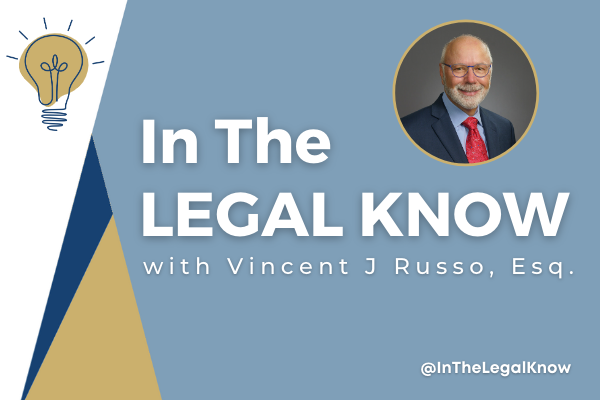Watch “In The Legal Know” with Vincent J. Russo Vincent appeared on CFN Live on…
Can I Revoke My Irrevocable Trust?
When it comes to protecting your assets from the costs of a long-term illness, such as a nursing home, the Medicaid Asset Protection Trust is a staple planning technique. It is an effective way to protect your home (and other property) as well as certain liquid assets in the event you require long-term nursing home care in the future (after five years).
The Medicaid Asset Protection Trust (“MAPT”) is a form of irrevocable living trust. This means that the Grantor (or Settlor), the person setting up the trust, cannot revoke the trust. It is this feature, in part, that protects the assets in the trust from a nursing home and Medicaid.
But what happens if the Grantor needs nursing home care before the end of the five-year waiting period?
For example, if Joan establishes a MAPT today and transfers ownership of her home to the trust, she is transferring legal ownership to the trust. This means that for Medicaid purposes she has made a gift (or an “uncompensated transfer”) of her home, subjecting her to a penalty (or waiting) period for Medicaid eligibility if she requires nursing home care within the five years of her placing her home into the trust. At the time Joan established the trust, she was a relatively healthy 68-year-old. She had no significant health issues. Unfortunately, Joan suffered a serious and debilitating stroke 18 months later, which lead to her needing to enter a nursing home permanently. Joan did not have significant liquid assets. Her home was her most valuable asset (which is why she was trying to protect it from such a situation).
This is an example where the trust has to be “undone” or revoked. However, Joan cannot revoke an irrevocable trust by herself. In New York, we have a statute (law) which sets forth how to revoke such a trust. It requires the consent of all parties involved, the Settlor, the Trustee(s) and the beneficiary(ies), who must all be adults. In Joan’s case, her three children were the Trustees and beneficiaries and all consented to the revocation of the trust, which would allow the house to be put back into Joan’s name and for Joan to implement an alternate plan to protect a portion of the value of her home. But that’s a story for another day….
So, it is possible to revoke an irrevocable trust, but that should not be the plan – to simply think you can set up a trust and just revoke if needed in the future. Establishing a MAPT can be extraordinarily powerful and effective in asset protection planning, but it should be done in coordination and counsel with an experienced elder law and estate planning attorney.
Please feel free to contact us so that one of our experienced attorneys can assist you.




This Post Has 0 Comments